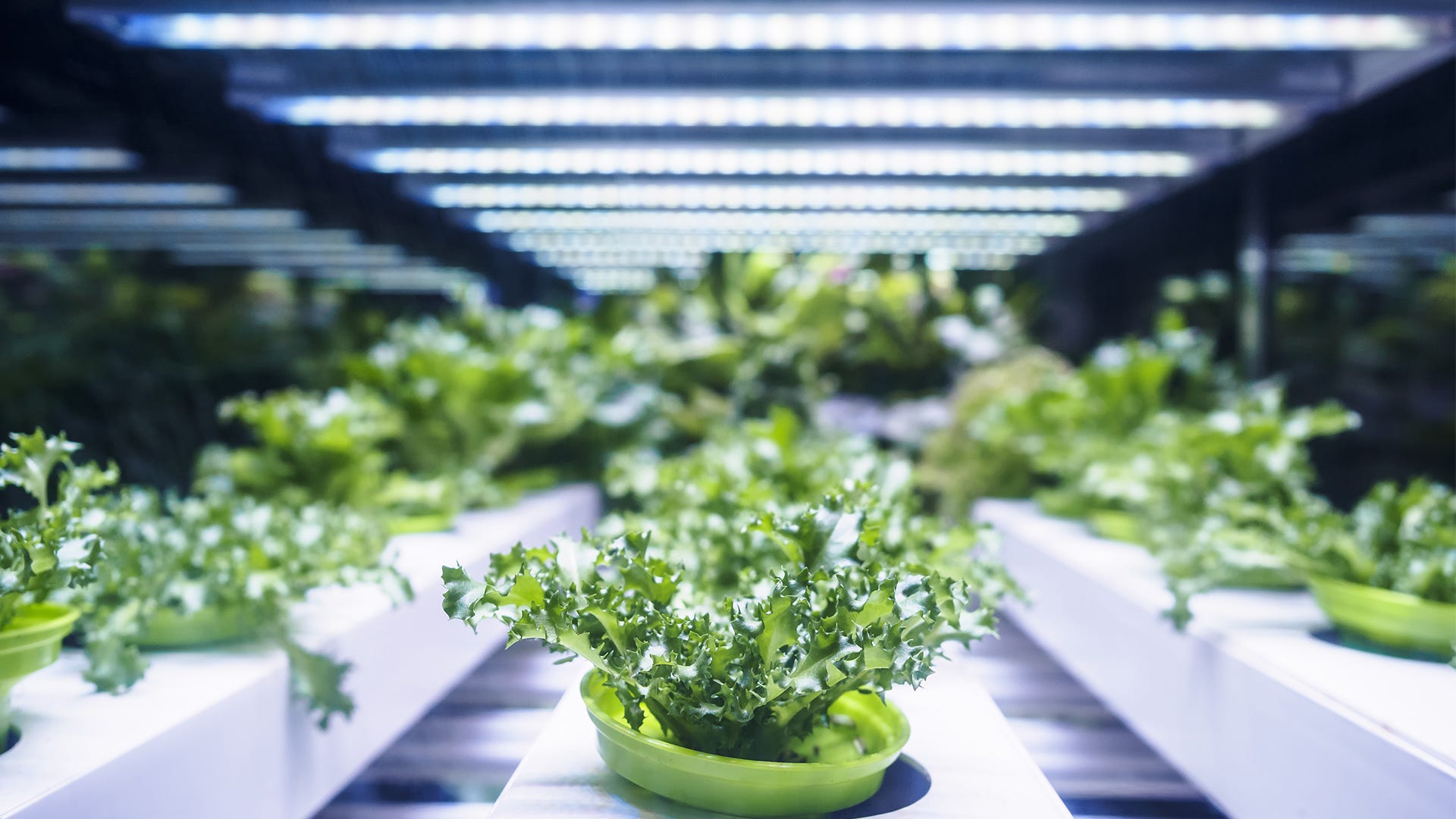
This is a guest post by Kevin Espiritu from Epic Gardening.
As winter approaches, many soil gardeners are turning to indoor growing to satisfy their green thumb. But the rules of gardening change when your plants aren’t getting their light from the sun, but from indoor grow lights instead.
There are a few simple concepts to keep in mind when growing indoors, as well as a few different types of grow lights that you may want to consider based on your specific situation. This article will give you the basics of both so you can get your garden growing, even in the winter!
Grow Light Concepts
When growing outside, you don’t have to worry about things like spectrum, intensity, power, or footprint — the big, flaming ball of fire in the sky takes care of that for you! But growing indoors requires a little more finesse. Let’s discuss some of these concepts.
Spectrum
Visible light exists on a spectrum, and specific parts of that spectrum are used by plants. “Blue” light is used by plants primarily during their vegetative phase, and “orange and red” light are used during the fruiting or flowering phase. This is why it’s important to choose the correct grow light and light bulbs – they may not be putting out the right color of light for your plants.
Intensity
A grow light’s intensity refers to how much photosynthetically active radiation (PAR) the light puts out. Remember, this light has to be in the spectrum that plants care about (hence the P in PAR), but once that condition is satisfied, there still must be enough of that light to actually power the plant’s cells.
Intensity is where many grow lights differ due to the technology used to build them.
Footprint
Unlike the sun, whose footprint is most of the Earth during daytime, grow lights have a significantly smaller footprint. Footprint refers to the area that is blanketed in light coming out of you grow light. The further away your light is from your plants, the greater the footprint — but the lower the intensity. The interplay of footprint and intensity is a critical balancing point in a grow light.
Types of Grow Lights
HID
High intensity discharge (HID) lights are the most popular type of lights for growing indoors due to the intensity of the light that they put out. However, they may not be the best choice if you’re just starting seeds for spring or not growing anything that will flower or fruit indoors. They are quite powerful and often relatively cheap, but their bulbs die sooner than other types of lights and they can cost more than other lights to run every month.
Fluorescent
Fluorescent lights, especially T5 grow lights, are extremely popular for new indoor growers for a few reasons:
- They put out enough light for most indoor growers who are rooting cuttings, starting seeds, or growing vegetative-only plants (lettuce, greens, etc.)
- They are more energy efficient and cost less to run every day
- They are relatively inexpensive
- They come in many different combinations of bulbs and lengths
The most common type of fluorescent grow light is a T5 system, usually with 2 or 4 bulbs that are either 2’ or 4’ long. A great basic setup has 4 bulbs and is 2’ long, making a perfect indoor seed starting or greens garden.
Because T5 lights are less intense than their HID counterparts, they are usually good for plants that are not grown to their flowering or fruiting stage. Many commercial gardeners use T5 lights to start seeds, propagate cuttings, or grow leafy greens and herbs.
LEDs
One of the newer lighting technologies to come onto the indoor growing scene are LED grow lights. They’ve been around for a few years and got a bad rap when they first came on the market due to dubious claims by manufacturers. Thankfully, the industry has cleaned up their act and LED grow lights are now some of the most popular and effective. They use an extremely low amount of energy relative to the intensity of light they put out, and their customizability makes them an excellent choice for beginning indoor growers.
Because they are composed of many smaller diodes, manufacturers are able to customize the light spectrum for specific purposes, like starting seeds in preparation for the spring gardening season.
Whichever light you go with, be sure to consider your unique gardening needs and select the right light for your situation. On top of that, make sure you know how to operate and position your light for maximum effectiveness. Growing indoors may seem daunting, but with a few practice runs you’ll be producing greens, seedlings, cuttings, and more in the comfort of your own home.
About the Author: Kevin is the founder of Epic Gardening, where he teaches people how to grow their own food using techniques like hydroponics, aquaponics, and urban gardening.



